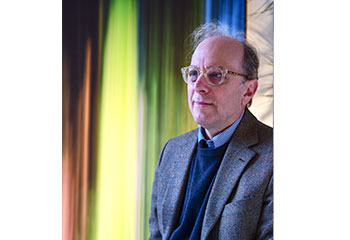Jackie Strauss Zimmerman purchased the Petroff Gallery in Toronto in August. The timing was bashert.
“The funny story was that I was going to buy the gallery five years ago. I had a partner who had a change of heart, so we didn’t pursue it and someone else purchased it. Over the years, I would drive by and feel a little regret. One day, I told my husband and he suggested, ‘why not ask if the owner wants a partner, or maybe he wants to sell?’ ” she said.
Long before the Petroff Gallery existed, the space was occupied by Royal Trust. “It was a bank and I worked here when I was just out of university,” said Strauss Zimmerman.
Since 1982, the gallery has been known for its visual art and contemporary craft, having represented more than 200 Canadian artists and makers who are innovators in their chosen media. The unique hybrid of gifts and art features a wide assortment of mezuzahs, tallits, jewelry, tableware, ceramic, glass, wood, art sculptures and paintings.
Strauss Zimmerman recently introduced new Jewish artists to the gallery, including photographer Warren Grossman, painter Rachel Ovadia, jewellery artist Michelle Ross and woodturner Debra Braun. Other new artists include glass artists Steven Woodruff and Beck Lauzon, and ceramic artist Yolande Norris-Clark.
“I want to focus on Israeli artists and bring in Judaica that is unique to Toronto that isn’t carried elsewhere. I’m also trying to mix things up by bringing in new elements, such as photography into the gallery, because it’s a modern medium right now and becoming much more current and accepted as a true art form. Warren Grossman, a noted Toronto architect, will celebrate his passion for photography with his first exhibition at Petroff Gallery from Jan. 16th to 31st,” said Strauss Zimmerman.
READ: ARTISTS WITH DISABILITIES SHOWCASE PHOTOGRAPHY
Grossman’s exhibition, The Architecture of Time, is not filled with his usual classical images; rather, this collection comprises what he calls “a vanishing moment.”
“Whereas classical photography attempts to hold or freeze the moment, these images are meant to be an abstract impression of the present moment as it increasingly slips our grasp. They are meant to provoke an increased perception and appreciation of the infinitely small interlude between past and future that is the ever-vanishing now,” explained Grossman.

“Most people think they are paintings and that was also very purposeful, because, in a sense, it’s taking the impressions of the moment and expressing them in an abstract way – but printing it to make it look like a painting. I will often get asked if these images are photoshopped from software that is used to manipulate the image, but in fact, this is the opposite.”
The collection consists of nature photographs, shot in Muskoka, Ont., and Toronto, that were taken on a digital camera.
“Once I had the printer properly calibrated, I printed them on a large scale and on canvas,” said Grossman.
He was introduced to the camera by his father at a young age.
“When I was nine years old, I started taking classes in how to develop film and print my own images. When you understand and learn photography, you train your eye for detail and proportion and scale and light and shadow. All of those elements are critical. I was about 13 when my parents got me a subscription to a series from Time Life. Each volume contained valuable information about the history, the themes and the technical aspect of photography. This left a huge impact on me,” said Grossman.
Taking inspiration from many of the great photographers, he went on to teach photography in Toronto and at summer camps, before pursuing a career in architecture.
So what’s next for the Petroff Gallery?
“We are doing a feature of miniatures where we have asked all of our artists to produce essentially 12” x 12” works. It’s a nice way of showcasing all of their work,” said Strauss Zimmerman.
